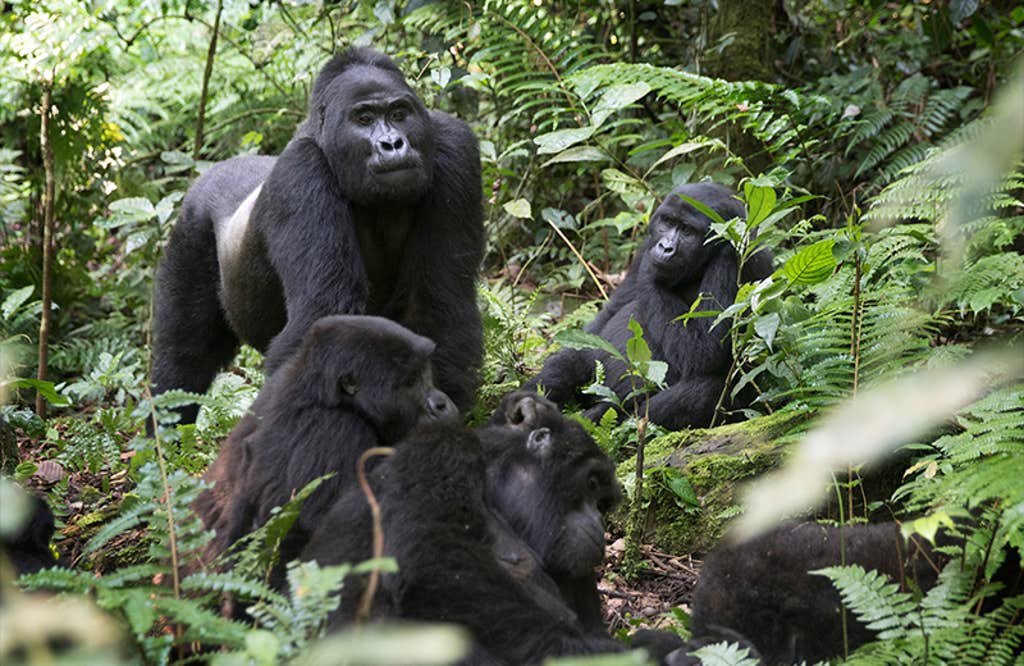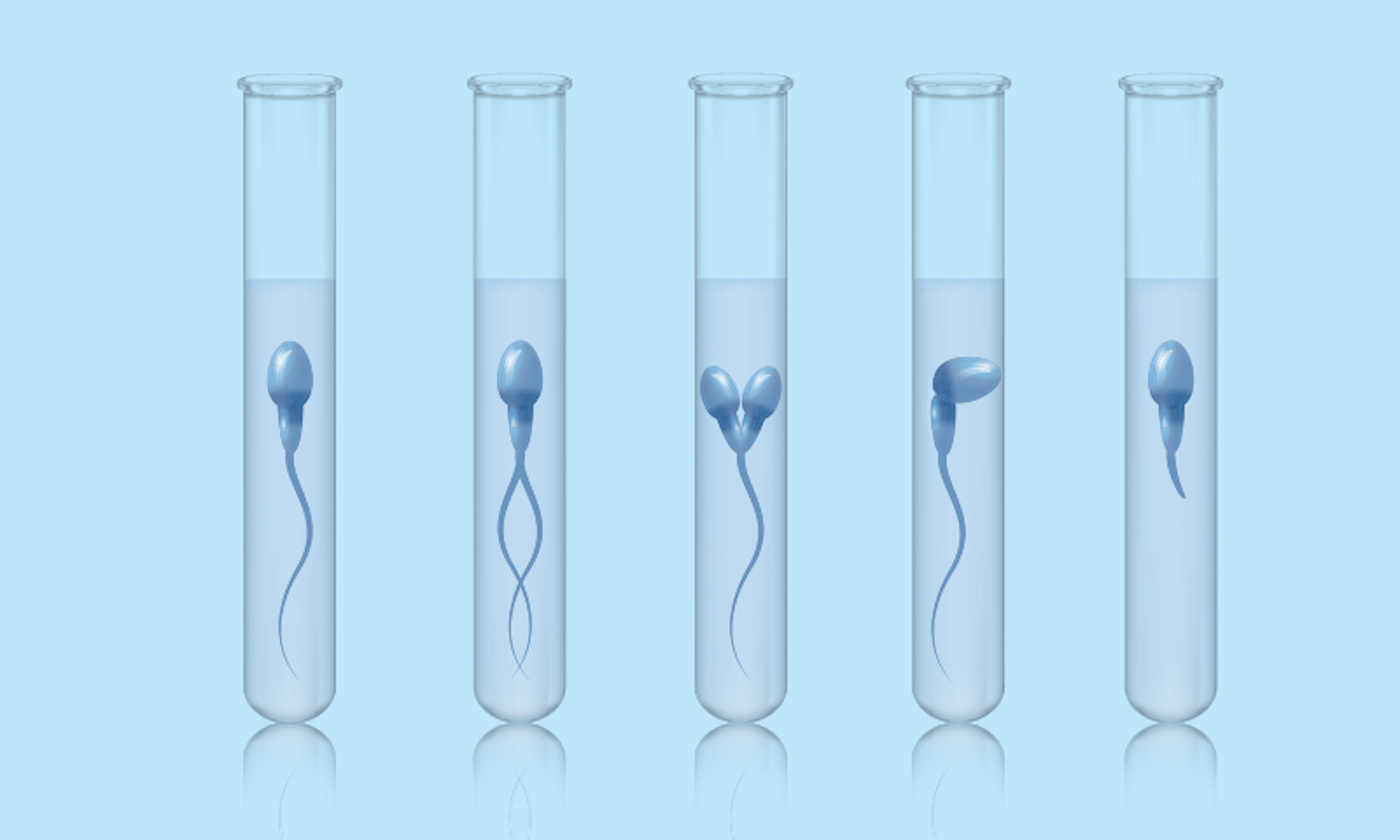Sperm don’t get much respect. They’re little more than a bare-bones package of DNA outfitted with a lashing tail. And they’re produced in such vast numbers that no single pollywog counts for very much. We all know about their co-starring role in reproduction. But as a 2023 Nature paper underscores, sperm represent some of the most extraordinary and counterintuitive processes of evolution—which got us all here in the first place. So maybe it’s time we get to know sperm better.
To begin with, spermatozoa not only embody the reproductive prospects of males who make them, they have remarkable agency in themselves. Evolutionary biologists have long known that among many species, males compete with other males, the ultimate fitness payoff being that winners will get to project their genes (via their sperm) to the next generation. But competition is also being waged inside male bodies. Sperm battle to fertilize a female’s egg, but they continue to battle even after copulation, perhaps for their own evolutionary payoff.
When sperm disband their cooperativeness, it’s each pollywog for himself.
What’s surprising about the new Nature study is that it shows sperm also cooperate with each other. Human semen is of low viscosity compared to much of the female reproductive tract. When the hard-working little swimmers encounter the thicker vaginal mucus, their path is slowed. So the sperm often join together at their heads, which gives them greater swimming speed (up to 50 percent faster) than if they were to carry on individually.
What’s more, human sperm with higher DNA integrity (less fragmentation) are more likely to associate together, practicing their strategy of all-for-one, one-for-all. When the local viscosity diminishes, they disband their Musketeer-like cooperativeness, reverting to each pollywog for himself. Interestingly, the Nature researchers also simulated cases in which a female copulates with more than one male. They found that related sperm—produced by the same male—preferentially associate together, gaining an advantage over their unrelated non-brethren, who are slowed down when they form analogous groups.
This collaboration of related sperm is biologically consistent with the evolutionary phenomenon of kin selection, whereby individuals (whether bodies or gametes) are selected to benefit others that carry shared genes. Those individuals who have genes in common are called “relatives.” When they behave in this way—aiding other bodies with whom they share genes—we call the behavior “altruism,” although it’s really a matter of genes behaving for their own benefit and using bodies to achieve this end.

This recent evidence of human sperm cooperation is stunningly counterintuitive, because in most respects, competition is the name of the evolutionary game, especially when unrelated individual bodies struggle to be reproductively successful. And this competition is especially intense among males.
Until recently, biologists have assumed that nearly all this reproductive struggle takes place among individual males. Turning the focus on gametes has revealed a new world of evolutionary strategies, in which individual males struggle with each other, not just via their bodies, but also via their sperm. Essentially, the behavior of sperm is analogous to the behavior of individual males, with the same forces of evolution playing out on both levels. The key is that males realize their success by making their sperm successful, and much of that success depends not just on their bodies but on the sperm themselves.
Here, testicles have a tale to tell. Both chimps and bonobos have enormous testicles. In these species, the females end up mating with more than one male. From the male perspective, the more sperm you have in the game, the more likely you are to win. Even in cases such as bonobos, where males don’t compete very vigorously, there’s still plenty of male–male competition, much of it taking place within the reproductive tract of females.
Human testis size is closer to that of gorillas than to chimps or bonobos.
By contrast, among gorillas, male-male competition is pre-copulatory, occurring via bodies rather than sperm. Dominant harem-holding silverback males have already achieved their status by physically defeating and intimidating other males. They don’t need to produce lots of sperm, because no other male will likely copulate with their females; hence, for all their great size and strength, male gorillas have comparatively tiny testicles.
Human testis size, relative to body weight, is closer to that of gorillas than to chimps or bonobos. In harem-forming gorillas, testes are about 0.02 percent of body weight, and their ejaculates are relatively dilute, with roughly 5 million sperm per squirt. No need to make a lot of sperm, or a highly concentrated ejaculate, if you’re the only guy likely to inseminate a female. By contrast, chimpanzees have testes that are proportionally 15 times larger (0.3 percent of body weight), and their ejaculate is 14 times more sperm rich (60 million pollywogs at a time). Human testes are on average 0.06 percent of body weight and sperm concentration is about 25 million per ejaculate. This pattern is consistent with data on the average number of male sex partners for females per birth: gorillas, one partner per birth; human beings, 1.1; baboons, 8; bonobos, 9; and common chimps, 13.
Not only do men have relatively small testicles, they also have reduced Sertoli cell mass. These cells help nourish the developing sperm and are sometimes called “nurse” cells. With less sperm competition, there’s less need for the little swimmers to be bulked up. In addition, men possess comparatively small sperm reservoirs, of the sort expected if sperm were to be ejaculated perhaps every few days rather than many times per day, as in multimale, multifemale troops such as chimps and bonobos. Incidentally, there are some species in which males produce substantially fewer sperm per ejaculation. Among some kinds of seahorses, for example, sperm are numbered by the dozen rather than by the hundreds of million. This makes sense because their females deposit eggs within the males’ brood pouch, where they are fertilized without risk of intrusion by other males and their sperm.
It is one thing to note how males often use their sperm to compete with that of other males, quite another to explore whether sperm compete directly with each other, even within the ejaculate of the same male. But in fact there is a degree of mano-a-mano competition, with tiny spermatic gladiators carrying on evolutionary battles against other suitors, albeit those with the same forefather.
To be sure, individual sperm are closely related insofar as they were produced by the same male; but they are also genetically distinct from each other. Following spermatogenesis, each sperm carries its own random assortment of one-half its producer’s genes, so they are nearly always genetically distinct from each other. As a result, individual sperm struggle with each other within the micro-arena of a female’s reproductive tract. Success of any given sperm will be determined by its ability to out-perform its … shall we call them brothers?
In many species, males will guard “their” females after copulation, to deter other males from mating with the female in question. Not uncommonly, ejaculates will congeal within the female reproductive tract, forming copulatory plugs that prevent semen from leaking out while also preventing other males from getting in. Some insects carry this tactic to extremes. In certain bee species, the male’s body literally explodes after copulation, due to a sudden increase in intra-abdominal pressure, which embeds part of the now-deceased male’s body into the female’s genital tract, preventing other males from copulating with the just-fertilized female. Among many mammals, including chimps, females have also evolved post-copulatory counter strategies in which they sometimes remove those plugs, making themselves available for subsequent mating and fertilization. Interestingly, this hasn’t been observed among orangutans, in which females copulate almost exclusively with just one male, and among which copulatory plugs aren’t even produced.
Although sperm competition theory is focused on strategies of male-male competition, females are not without agency in this regard, using tactics that go beyond removing or dissolving copulatory plugs. Sexual selection theory is replete with cases of female choice, first described by Charles Darwin. Eggs, unlike their spermatic counterparts, are relatively immobile: to our knowledge, there is no egg-egg competition. But there is strong evidence that females set the stage for what is known as “cryptic female choice.” Rather than orchestrate their anatomy and physiology to facilitate fertilization—as a naïve evolutionary perspective would suggest—females often make this essential evolutionary process rather difficult; for example, by sequestering their eggs on the far side of twisty, difficult-to-access tubes, selecting for sperm that are especially vigorous. And perhaps also favoring those with a tendency to cooperate when traversing a high viscosity medium.
In certain bee species, the male’s body literally explodes after copulation.
Ecologists distinguish between two fundamental mechanisms of competition: scramble competition and contest competition. In scrambles, sheer numbers are key. Imagine an Easter egg hunt in which the winner accumulates (or fertilizes) the most eggs. In contest competition, participants would first compete with each other, independent of the actual egg hunt, after which the winner gets most of the eggs. Given that sperm are produced in such vast numbers, it is clear that simple scrambles are an important way that sperm competition takes place. The question arises, however, whether contest competition also occurs among sperm.
About one-fifth of mammalian (including human) sperm are typically abnormal, containing no heads, two heads, two or more tails, oddly misshapen or malfunctioning tails, and so forth. As a result, they can’t achieve their traditional function, namely fertilizing an egg. Abnormal sperm have generally been seen as the result of simple biological blundering, whereby errors are unavoidable, perhaps especially when the end products are made so rapidly and in such great numbers.
Some biologists in the 1980s hypothesized that aberrant sperm aren’t failures but “kamikaze” sperm. The idea is that these might be produced by males as part of a competitive strategy whereby their function isn’t fertilization but rather sacrificing themselves to entangle and otherwise disable other sperm. Alternatively, these supposedly self-sacrificing sperm could also contribute to the formation of those copulatory plugs. Alas, this intriguing notion is not supported by current theory or data. It appears that although male bodies compete largely via contest competition, sperm do it mostly by scrambling. And the occasional cooperation.
The more we study the living world, the more diverse, complex, and downright fascinating are the maneuvers by which natural selection does its work. I suspect most of us never realized that goes for sperm, too. ![]()
Lead image: Vadi Fuoco / Shutterstock




























